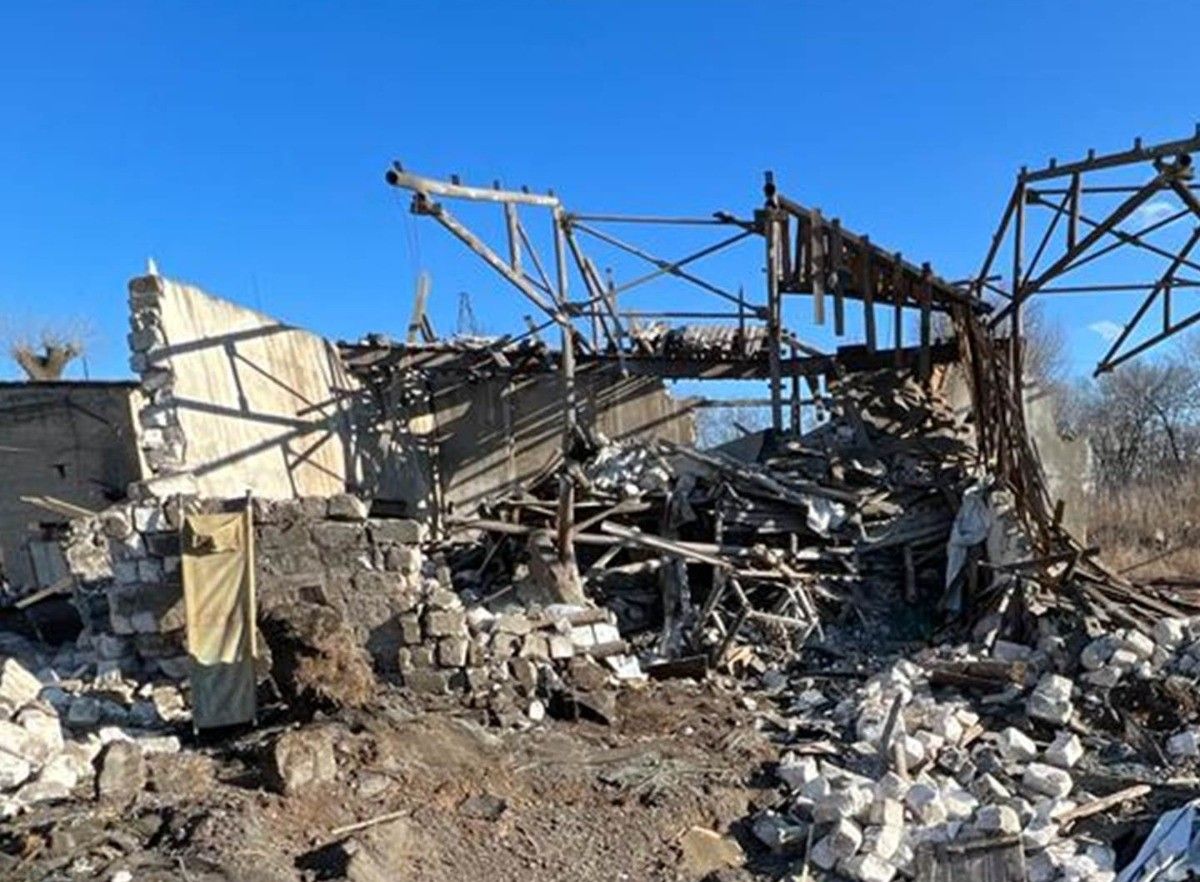Daily Flyer - November 28, 2023
A voice of Ukraine to the West


A Russian air strike on Toretsk in Donetsk Oblast on Nov. 28 injured four female employees of a local workshop, the Donetsk Oblast Prosecutor's Office reported.
Russian forces reportedly launched the attack at 10:50, targeting the enterprise where the women were present at the time. The victims, aged 35, 43, 52, and 54, were subsequently hospitalized, the prosecutors said. Several industrial buildings were also reportedly damaged in the attack. Toretsk lies not far from the front line and is a common target of Russian strikes.
Police finished mandatory evacuation of children from Kupiansk district
The mandatory evacuation of children from the Kupiansk district in Kharkiv Oblast, which has been consistently targeted by Russian attacks, has concluded, according to a statement from the regional police on November 27. Over the period from November 3 to November 26, a collaborative effort involving the police, volunteers, and local authorities successfully rescued 296 children, along with their family members or legal guardians.
Among the rescued children, 31 were from Kindrashivka, 182 from the eastern bank of the Oskil River in Kupiansk, and 83 from Kurylivka, as reported by the Kharkiv Oblast Police. All evacuated individuals were safely transported to undisclosed locations, ensuring their well-being.
However, the whereabouts of two additional children, aged five and 11 and registered in the Kurylivka community, remain unknown. Preliminary data suggest that they left Kupiansk voluntarily with their mother.
The evacuation efforts began in August, initiated by local authorities conducting a general evacuation of civilians from the Kupiansk district. This action was prompted by the intensified attacks from Russian forces in the region, concentrating their efforts since mid-July to regain positions lost during the Ukrainian surprise counteroffensive in Kharkiv Oblast the previous autumn.
Kupiansk had been under Russian occupation from February 27 to September 10, 2022. The ongoing conflict underscores the critical importance of safeguarding the civilian population, particularly vulnerable groups such as children, and the continuous challenges faced by communities in regions directly affected by military hostilities.
10 people dead, 23 injured due to severe weather in Ukraine
Tragically, severe weather conditions in Ukraine have resulted in significant human casualties and widespread disruptions. Interior Minister Ihor Klymenko reported that as of the morning of November 28, 10 people have lost their lives, and 23 individuals, including two children, have sustained injuries.
Odesa Oblast, one of the hardest-hit regions, reported five fatalities and 15 injuries. Emergency services in this oblast have rendered assistance to 2,498 people, including 162 children.
Mykolaiv Oblast experienced two deaths and two injuries, according to the minister. Additional fatalities were reported in Kharkiv Oblast and Kyiv. Furthermore, Russian occupation authorities reported one fatality in Crimea, attributing it to adverse weather conditions on November 27.
The severe weather, characterized by storms, strong winds, heavy rain, and snowfall, struck various parts of Ukraine on November 26-27, leading to floods, structural damage, power outages, and transportation issues. Emergency services worked to tow 1,530 stranded vehicles. In Mykolaiv and Kirovohrad oblasts, eight highways remain closed, and traffic is restricted on sections of two roads in Odesa Oblast.
As of the morning of November 28, 411 settlements in 11 oblasts are reportedly without power, underscoring the extensive impact of the weather-related disruptions on essential services and infrastructure.
The situation highlights the urgent need for coordinated response efforts to address the immediate aftermath of the severe weather, provide assistance to affected communities, and initiate recovery measures. Authorities and emergency services will likely continue their efforts to restore normalcy and ensure the well-being of the affected population.
Russia's oil trade with India faces currency obstacle
Russia's crucial oil trade with India, one of its significant buyers, is encountering a substantial hurdle due to a shift away from transactions in the U.S. dollar, as reported by Reuters on November 27, citing undisclosed sources.
In response to Western sanctions, Russia has been moving away from using the U.S. dollar for oil payments, opting for alternative currencies. Challenges emerged in July when India insisted on paying for Russian oil in its national currency, the rupee. The deal nearly collapsed as Russian oil suppliers hesitated to accept the rupee, reportedly influenced by informal guidance from the Russian central bank. Receiving revenue in rupees posed challenges, as the currency has limited utility outside of India, according to a source in Russian banking.
Amidst the standoff, at least two major Russian companies reportedly threatened in August to redirect around a dozen tankers from India to other destinations. Eventually, the parties agreed to use other intermediary currencies for payment, averting a breakdown in the trade relationship.
Reuters noted that the absence of a viable alternative to the dollar poses a significant problem for Russia, affecting its oil trade not only with India but also with buyers in Africa, China, and Turkey. As the West reduces its reliance on Russian oil in response to the conflict in Ukraine, Moscow has sought alternative markets, with India playing a crucial role by accounting for more than 60% of Russia's seaborne oil. This makes India the second-largest buyer of Russian seaborne crude after China.
The broader trade relationship between Russia and India has seen substantial growth, with overall trade between the two countries in the first eight months of 2023 more than doubling compared to the previous year, reaching a record high of almost $44 billion, according to Russian state-run media RIA Novosti. The challenges in currency transactions underscore the complexities and impacts of geopolitical developments on global economic dynamics.
Reuters noted that the absence of a viable alternative to the dollar poses a significant problem for Russia, affecting its oil trade not only with India but also with buyers in Africa, China, and Turkey

